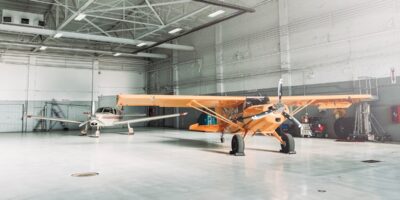The Benefits of Shared Hangar Space
Shared hangar space is becoming more popular in the aviation industry. Pilots and aircraft owners are realizing its many advantages. It offers a practical solution to various challenges. Here’s a closer look at the benefits of shared hangar space.
Cost Efficiency

Owning hangar space can be expensive. Shared hangar space reduces the financial burden. Multiple users share the rent and maintenance costs. This makes it more affordable for everyone involved. Small aircraft owners especially benefit. They often don’t need a full hangar. Sharing allows them to use only the space they require. This cost-sharing helps optimize budget use.
Enhanced Security
Shared hangar facilities usually have better security features. They often include surveillance cameras, alarm systems, and access control. These measures help protect aircraft against theft or vandalism. Individual aircraft owners might not be able to afford such high-end security on their own. With shared hangar space, these costs are divided among all users. This results in top-tier security for all aircraft.
Community and Networking
Sharing hangar space fosters a sense of community. It brings together aviation enthusiasts and professionals. This environment encourages networking. Pilots and aircraft owners can share their knowledge and experience. It can lead to new friendships and professional connections. Collaboration becomes easier. People share maintenance tips, flight routes, and insider information. This exchange of information can be invaluable.
Resource Sharing
Shared hangar space means shared resources. Specialized tools and equipment can be costly. In a shared environment, these can be pooled together. This includes everything from maintenance tools to high-tech equipment. It reduces the need for everyone to buy their own. Access to a broader range of tools enhances efficiency. It ensures that all necessary equipment is available when needed.
Environmental Impact
Sharing hangar space can reduce environmental impact. It minimizes the number of structures needed. This helps reduce the carbon footprint of aviation facilities. Shared spaces are also more likely to implement environmentally friendly practices. These can include energy-efficient lighting and heating. It’s a way to promote sustainability within the aviation community.
Maintenance Flexibility
Maintaining an aircraft is vital but can be costly. Shared hangar facilities often have maintenance services on-site. This offers flexibility and convenience. Aircraft owners can access expert services without needing to move their planes. It ensures that maintenance is carried out regularly and efficiently. This can help extend the life of the aircraft and maintain safety standards.
Business Opportunities
Aviation-related businesses can flourish in shared hangar spaces. These include charter services, maintenance providers, and flight schools. Shared hangars provide a captive market. They bring potential customers together in one location. This can lead to increased business and growth opportunities. It’s a win-win for both aircraft owners and service providers.
Flexibility and Availability
Shared hangar space offers greater flexibility compared to private hangars. Aircraft owners can often choose from various hangar sizes. This lets them select what best fits their needs and budget. Availability is also typically better. Shared facilities can accommodate more aircraft. This means there’s less risk of space shortages. It’s easier to find a spot when needed.
Improved Facility Management
Managing hangar space can be complex. Shared hangar facilities usually have dedicated management teams. They handle the day-to-day operations. This includes maintenance, security, and tenant coordination. It ensures that the facility runs smoothly. Aircraft owners benefit from professional management. It frees them from the hassles of property upkeep.
Access to Amenities
Shared hangar spaces often come with additional amenities. These can include pilot lounges, conference rooms, and even cafeterias. Such facilities enhance the overall experience. They provide comfort and convenience. Access to these amenities can make time spent at the hangar more enjoyable. It turns the hangar from a storage place into a community hub.
“`
Recommended Aviation Resources
Pilots Handbook of Aeronautical Knowledge – $25.42
Essential FAA handbook for every pilot.
Aircraft Owners Handbook of Maintenance
Keep your aircraft in top condition.
As an Amazon Associate, we earn from qualifying purchases.



